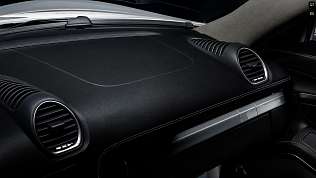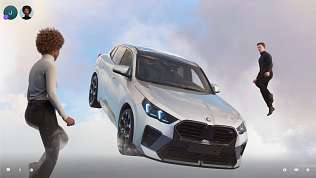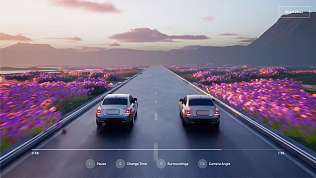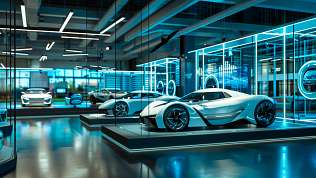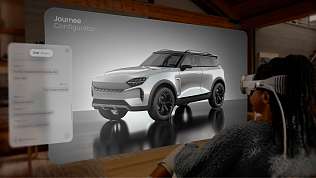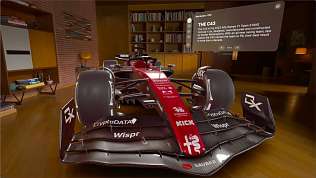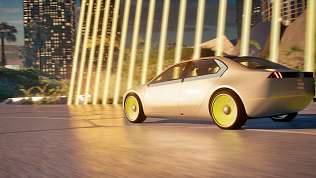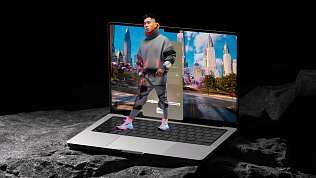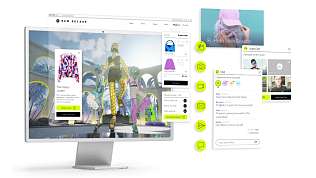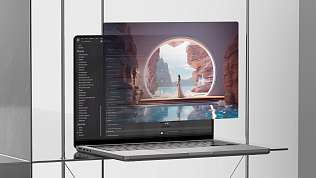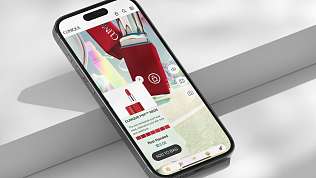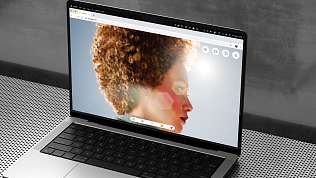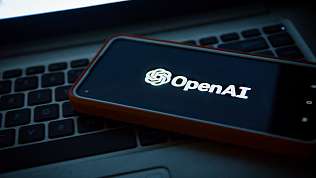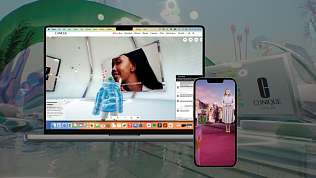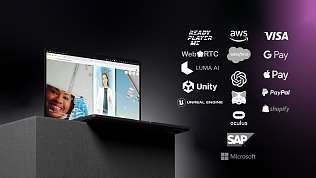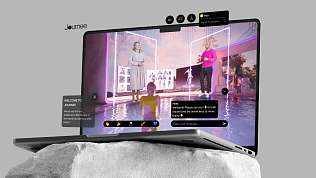The Ultimate VR Application Guide for The Automotive Industry
Explore how VR revolutionizes automotive experiences, enhancing customer engagement and driving innovation across the industry.
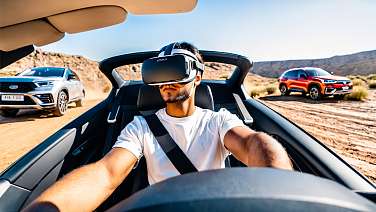
Virtual reality has the potential to significantly enhance brand affinity for car companies, making it a valuable tool not only for brand engagement during promotional campaigns, events, and on-site discovery experiences but also as a powerful asset in design, engineering, and training processes.
Why Use VR?
Customer experience is at the heart of modern retail landscapes. Companies understand the power of differentiating themselves through immersive experiences. This evolution has only accelerated with the next generation of consumers who have grown up with technology, shaping their expectations and preferences. The automotive retail sector recognizes that this generation of car buyers is more inclined to seek out these innovative experiences. Consequently, virtual reality (VR) is being increasingly integrated into not only sales and marketing processes but also into design, engineering, and training.
With the advent of accessible hardware, VR can seamlessly integrate into existing systems, introducing customers to digital vehicles on an entirely new level. Configuration experiences can be incorporated at any stage of the buyer’s journey. VR provides methods of exploration and interaction that were previously impossible. Consumers can now interact with features, change environments, and even suspend all components of a vehicle in mid-air. This technological advancement has elevated the car buying journey through enhanced engagement.
As a medium, VR adds substantial value across the automotive value chain. OEMs often face the challenge of showcasing the full range of customized vehicles due to limited physical space in showrooms. A new car is a significant investment, and customers want to personalize each detail. VR now offers a more interactive and immersive solution, allowing customers to experience their custom-configured vehicles in a virtual setting.
Moreover, the availability of test drive vehicles in dealerships can be limited, especially for specific models or newly released cars. VR enables customers to virtually test drive vehicles that may not be physically present in the showroom, including freshly customized configurations. This technology allows potential buyers to experience the driving dynamics and features of a vehicle before it even arrives at the dealership.
Beyond sales, VR also enhances design and engineering processes by allowing teams to collaborate in virtual environments, visualize concepts, and iterate designs more efficiently. In training, VR provides hands-on learning opportunities, simulating real-world scenarios in a controlled, risk-free environment. Adopting VR early provides a significant advantage, offering a comprehensive and engaging experience that can enhance the decision-making process across multiple facets of the automotive industry.
What is VR?
Virtual Reality (VR) immerses users in a fully digital environment, through the use of a headset. This technology allows users to experience and interact with a virtual world as if they were physically present. Understand VR, AR, MR and XR at once
VR use cases in the automotive industry
Virtual reality (VR) offers a plethora of innovative applications in the automotive industry, transforming traditional practices and enhancing customer and employee experiences. From entertainment to education, VR is revolutionizing how we interact with vehicles and the automotive world.
Entertainment and Media - Captivating Immersive Experiences Increasing Conversion
VR offers a dynamic platform for virtual car shows and test drives. By immersing users in virtual environments, customers can experience driving various car models and explore new features in a highly engaging way. This can be further enhanced with hexapods, providing physical feedback that simulates driving dynamics. The immersive nature of these experiences not only captivates audiences but also increases conversion rates by providing a more compelling and memorable interaction.
Art and Culture - Brand Storytelling Increasing Engagement Time and Brand Loyalty
Museums and galleries can utilize VR to create virtual car museums and exhibitions. These virtual showcases allow a global audience to explore classic cars and automotive history, offering interactive and educational experiences. By presenting rich, engaging stories, brands can deepen customer engagement and foster loyalty, as users spend more time exploring the brand’s heritage and innovations.
After-sales Opportunities - Virtual Driving Experiences
OEMs can leverage VR to offer unique driving experiences as part of their after sales services. For example, customers can virtually experience driving on ice in Finland, navigating sand dunes, or tackling off-track muddy areas. This immersive training allows customers to learn how to drive in extreme conditions before booking the actual trip. VR provides a realistic preview, allowing users to not only see but also feel how it might be, enhancing their confidence and excitement about the experience. This approach not only deepens the customer’s connection with the brand but also opens up new revenue streams in the after sales market.
Healthcare - Safe Recovery and Improved Driver Safety
VR plays a crucial role in driver rehabilitation and safety training. For drivers recovering from accidents, VR provides controlled environments for exposure therapy and rehabilitation exercises. Additionally, VR simulations help drivers understand the consequences of unsafe behaviors and practice safe driving skills in a risk-free setting. This technology not only aids in recovery but also enhances overall driver safety, reducing the likelihood of real-world accidents.
Collaboration - Seamless Remote Collaboration and Innovative Design
Automotive design teams can use VR for remote collaboration, working together in shared virtual spaces regardless of their physical location. This setup improves communication and efficiency, allowing for real-time interaction and feedback. Moreover, VR opens up new possibilities for creative car design, enabling artists and designers to experiment with innovative concepts in a fully immersive environment.
Technician Education and Training - Realistic, Risk-Free Skill Development
VR provides an invaluable tool for automotive technician training, offering a risk-free environment where students and professionals can practice repairs and maintenance on virtual car models. Simulated scenarios help trainees develop their skills without the need for physical cars, ensuring they are well-prepared for real-world situations. Additionally, companies use VR for safety drills, allowing factory workers to practice protocols and emergency responses in a safe, controlled setting. This technology also aids in practicing the assembly and disassembly of Completely Knocked Down (CKD) vehicles, improving efficiency and accuracy.
Sales or Presentation Training - Maintaining Global Service Quality Through Enhanced Communication
VR transforms sales and presentation training by immersing participants in realistic scenarios. Using green-screened actors and voice-activated interactions, VR enables trainees to practice customer engagement in a lifelike, risk-free environment. This setup allows for natural conversation dynamics, enhancing communication skills.
Additionally, VR supports group sessions through interactive seminars, fostering shared learning and collective understanding of effective communication strategies. Data collected from these sessions is analyzed on a sophisticated platform, providing insights that help tailor future training programs. This approach ensures that sales teams are well-prepared for real-world interactions, maintaining consistent service quality and improving overall engagement with clients and stakeholders.
Virtual Test Drives - Realistic and Engaging Vehicle Simulations
VR makes virtual test drives more engaging by integrating digital elements into the real world. Customers can experience vehicle performance and features in a more realistic and immersive manner. Additionally, VR can simulate driving assistance and safety features, allowing customers to better understand their value and functionality.
Omnichannel Global Events and Launches - Expanding Reach with Immersive Experiences
VR enables automotive companies to host events, product launches, and press conferences that can be attended both in person and in an online virtual world simultaneously. This technology creates fully immersive environments, allowing attendees to explore new car models and engage with brand content in a highly interactive setting. By blending physical and digital elements, VR offers a richer and more engaging experience for all participants, whether they are physically present or joining virtually. This approach expands the reach of automotive events, enabling global participation and creating a seamless experience across different platforms, ensuring that the brand message resonates more deeply with audiences, enhancing engagement, and driving greater impact.
VR application examples
Audi

Audi was one of the early adopters of VR technology, creating more than 400 “Customer Private Lounges” equipped with virtual reality stations. These lounges provided customers with a realistic experience of their configured cars, down to the finest details, using high-fidelity 4K rendering. This allowed dealerships to present the entire Audi model range, including all options and features. According to Nils Wollny, then Head of Digital Business Strategy/Customer Experience at Audi AG, the VR experience was developed as a comprehensive sales tool, offering customers more information and certainty in their purchasing decisions.
BMW

At the 2018 CES, BMW introduced VR@Retail, a virtual reality tool designed to enhance the retail sales experience. This immersive environment allowed users to view and interact with the BMW X2 Sports Activity Vehicle and customize features at select dealerships. BMW also held premiere events for their M Drive Tour Virtual Experience, where customers could configure their BMW M vehicles online and then explore them in VR. The experience included driving a virtual lap on the Le Mans race track using a real BMW M5 car seat mapped to the virtual world, offering an immersive and interactive experience.

Nissan

Nissan launched the Nissan LEAF virtual reality experience to maximize consumer awareness and engagement for the release of their new model. Located at Nissan Crossing in Ginza, Japan, this VR experience allowed customers to explore the various configurations of the Nissan LEAF in detail, without the need for a physical model. Users could interact with features such as the charging port and select different paint colors, offering a dynamic and engaging way to explore the vehicle.
Toyota

Toyota utilized VR to engage consumers and showcase their new C-HR model. The company installed a VR experience in shopping malls across Europe, featuring a configurable car at a 1:1 scale. Users could walk around, interact with, and explore the vehicle in a virtual environment, providing an innovative and immersive way to connect with the brand and its latest offering. All user controls in the Toyota C-HR experience, including those for interacting with and configuring the car, were entirely within the VR scene, with no requirement for a companion app, ensuring a seamless and immersive user experience.
How to choose the right device?

As the XR market continues to evolve, the market share of leading brands highlights the competitive landscape. According to recent data, Meta dominates the market, holding 64% of the share as of Q1 2024. Apple has entered the scene with a notable 16% share, while other players like Pico and Sony hold 7% and 4%, respectively. This diversity in the market offers a range of options for different needs and preferences.
Choosing the right device involves several considerations:
-
Purpose and Use Case: Define the target group and specific use case.
-
Availability & Cost for Users: Ensure the device is accessible, affordable, and available in the defined markets, as some devices are not available in all countries.
-
Ergonomics: Select the device that best meets your requirements, as each offers different advantages. Prioritize ergonomic design to ensure user comfort, especially for prolonged use.
-
Display Quality: High visual fidelity enhances the immersive experience.
-
Ecosystem Dependency/Compatibility: Ensure the device is compatible with existing systems and software.
-
Interaction Design: Consider how users will interact overall, including moving, selecting, changing elements, and navigating within the virtual environment.
-
Single or Multiplayer: Determine if the application requires single-user or multi-user functionality.
-
Future Proofing: Choose devices that will remain relevant as technology evolves.
Essential Elements of a High-Quality Automotive VR Experience
In the world of automotive virtual reality, visual quality and interactivity are paramount. Customers seek realistic experiences that can effectively substitute for physical interactions with a car. This means companies must prioritize high visual fidelity and accurate product representation. The more lifelike the experience, the more likely it is to engage customers and meet their expectations.
As virtual reality technology matures, car companies will continue to explore its potential across the customer journey. The goal is differentiation through experience, consistently innovating to enhance customer satisfaction and loyalty. Investing in VR is not just about staying ahead; it's about creating premium, immersive experiences that resonate with customers.
Integrating Virtual Technologies
Choosing the right virtual technology for the right application is crucial for a seamless omnichannel strategy:
-
Cloud Streaming: This is the most accessible option, requiring only a screen. It offers flexibility and ease of access, allowing customers to engage with content on various devices.
-
VR: Ideal for immersive test drives, especially in showroom settings. VR provides a fully immersive experience, helping customers explore vehicle features and performance in a controlled environment.
-
MR: Best suited for configuring cars in real-life environments. MR enables a blend of digital and physical interactions, allowing customers to see and interact with life-size 3D models in their actual surroundings. Learn more abour MR applications in the automotive industry
By leveraging these technologies appropriately, automotive companies can provide a seamless and cohesive experience across all touchpoints. This integrated approach not only enhances the customer journey but also supports a sustainable and adaptable automotive platform.
To dive deeper into how extended reality (XR) is reshaping the automotive industry, explore our detailed article on XR applications and their transformative impact here
Learn more: Contact us | Request a demo | Visit our automotive solutions
